Augmented reality (AR) is a digital technology that allows us the place digital assets over the real world. Want to be a White Walker from Game of Thrones? No problem. Want to see what a couch from Ikea looks like in your living room before you ever bust out your credit card? Totally simple with AR as well.
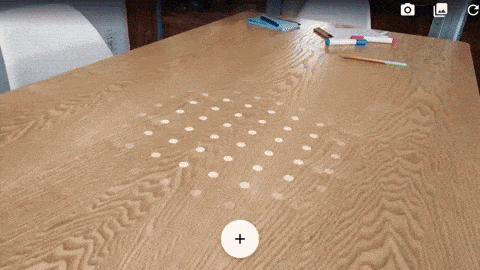
There are two key components required for an AR experience. First, you need a digital display and second, you need what we call tractability.
Check out our AR development services here:
AR Displays
AR displays can be anything from your iPad to a mobile phone or even a pair of augmented reality glasses. These displays give the ability to display or show 3D assets over the real world, creating the optical illusion that the object is actually there in the room with you. The quality, cost, and overall performance of AR displays range widely.
You may also hear people refer to two different types of AR based on the display type. The most common is mobile-based AR. The type of AR you enjoy on a tablet or phone. The second and much more complex kind of AR, is wearable AR, commonly referred to as AR glasses. These systems are worn on the user’s face, as seen in the picture below. The two most common devices in this segment of AR are the Hololens by Microsoft and the One by MagicLeap. These systems are also sometimes referred to as mixed reality headsets. But don’t be fooled, they are a form of AR technology.
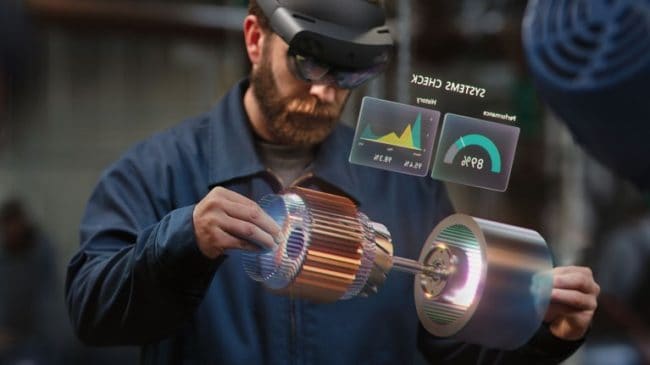
Trackability
The second required component of AR is traceability. Simply put, traceability is the AR device’s ability to read its surroundings. This is very similar to what is used in virtual reality but leveraged in a slightly different way. In VR, traceability is used to track a user’s motion in space and tell the headset how to properly shift and move the content inside the headset to give the illusion of presence. (This is why you can move around in VR without feeling sick). You can learn more about VR here.
In AR, traceability is used to track surfaces, to track someone’s face or to track someone’s hands. Let’s say you want to use AR to show what a new couch might look like in a living room. You first need to track the living room floor in order to ‘place’ the 3D model of the new couch. Trackability is also used to size objects properly.
Some AR technology also uses ‘AR markers’ to help track very specific things or items. An AR marker can be almost anything from a product label to a new car. AR markers are great if you what your users to experience AR along with a specific product, advertisement or object. AR wine labels are a good example of this.
You can see any example of a phone tracking a room in the GIF below.

AR Devices
As mentioned above, there are two basic ways a user can experience AR. The first, mobile. On your iPad, the phone in your pocket, that type of thing. The other way is through AR glasses. Most of the AR experiences you’re going to see nowadays are mobile-based. Apple and Google (Android) both support AR across a wide range of their mobile devices. You’ve probably seen or even used this technology yourself. Snapchat’s face filters are a good example.
The second and less common type of AR device is wearable technology. Currently, wearable AR is mainly only used in industrial and military settings.
In the future, however, wearable AR will likely become incredibly popular as technology continues to improve and cost come down. Currently, wearable AR headsets start at about $2,000 and go up from there. They also have a very limited number of games or experiences to choose from. However, there’s news that Apple is working on an AR headset of their own, and if we know anything about Apple hardware products, they do a great job of making highly desirable consumer hardware. It’s rumored these glasses should hit the market sometime in late 2021 or early 2022.
The Future of AR
AR will begin to pop up in our lives everywhere. Many new cars are now coming with AR heads-up displays projecting data right onto the windshield. Intel showed off a pair of AR glasses in late 2018 that looked just like a pair of regular old sunglasses but would allow users to check email and text notifications without any physical interaction. There are even companies working on AR-powered contact lenses and a technology called retinal projection. Using nothing more than a standard pair of wireframe glasses, retinal projection technology can project imagery right onto the retina of a user’s eye. This creates an illusion that there are objects floating out in space in front of you.
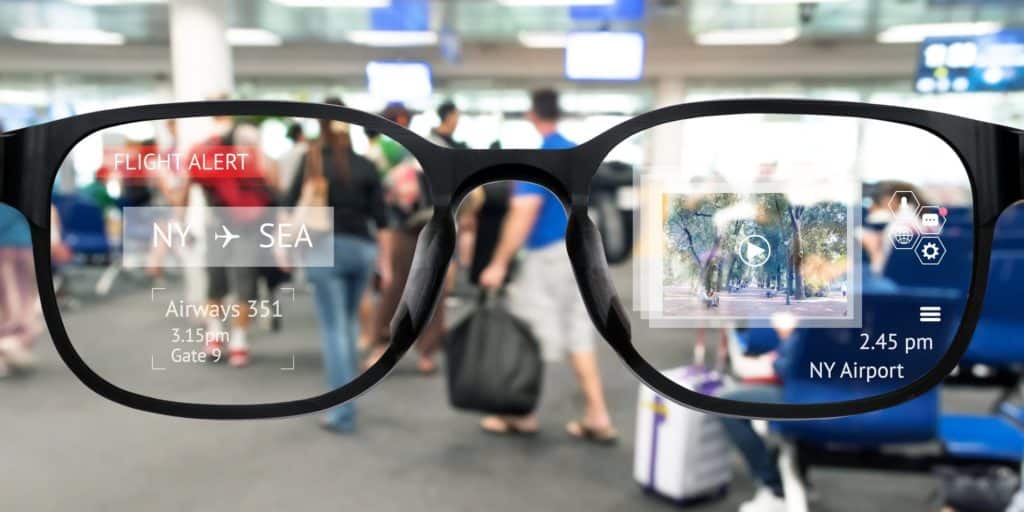
AR Today
As mentioned above, most of AR applications you can practically be used today will be experienced on a mobile device. Two of the most popular forms of AR right now are entertainment and gaming. For instance, social media platforms like Facebook and Snapchat are continuously rolling-out new AR features like face filters, photo frames, brand experiences and most recently allowing users to test and try-on products right inside their platforms.
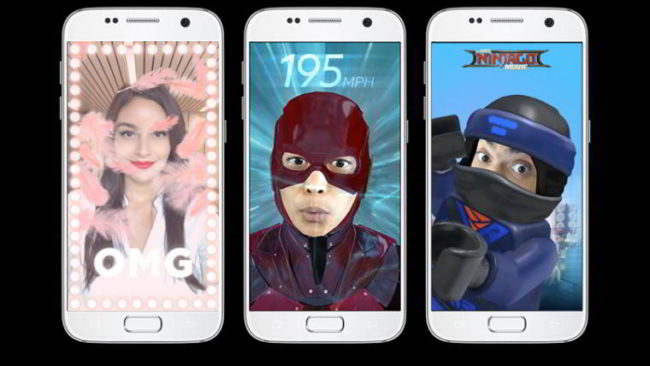
AR is also beginning to pop up more and more in the retail and online sales sectors. Companies like Ikea, Amazon, Sherwin Williams even brands like Gucci are allowing using AR to give consumers more information about the products. Ikea lets consumers ‘see’ products in their homes, Amazon will help you measure for shipping, and Sherwin Willaims lets you try out new paint colors without having to touch a brush. Expect to see AR continue to infiltrate the retail sector.
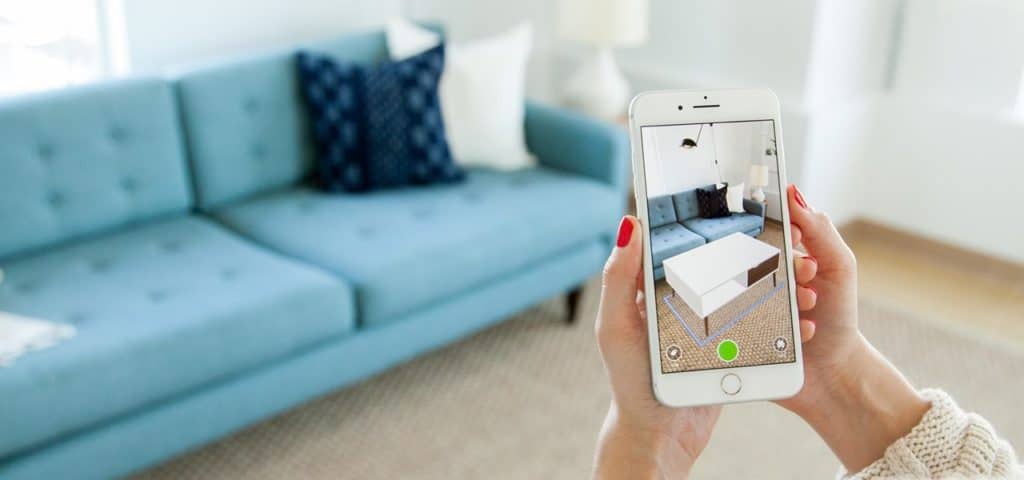
AR is also growing in popularity among industrial and military applications on headset based systems. The military for instance, recently signed a multi-million dollar contract with Microsoft to start putting Hololens’s on our soldiers out in the field. Companies like GE and Boeing are also starting to use the technology to give engineers and mechanics an overlay of digital information while still being able to work with both hands.
WebAR
One of the challenges with current AR technology is that most experiences first need to be downloaded via an application of some kind. When considering the technology for a consumer-focused experience, this added layer of friction can turn some consumers away.
WebAR, an AR technology that runs strictly over a device’s Internet connection eliminating this friction. WebAR is still fairly limited in its ability, but that is changing quickly. If you’re interested in AR, keep an eye out for more on WebAR, it’s going to be huge! You can learn more about WebAR in a separate blog from The Donut Shop here.
We hope you’ve enjoyed this article. Stay tuned for more on the all the latest and greatest VR, AR and 360 video.


